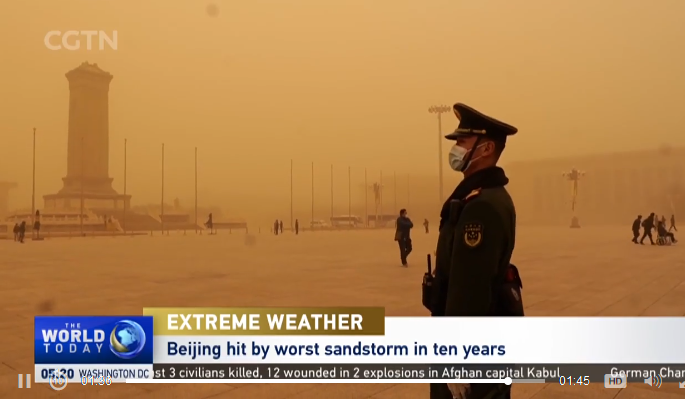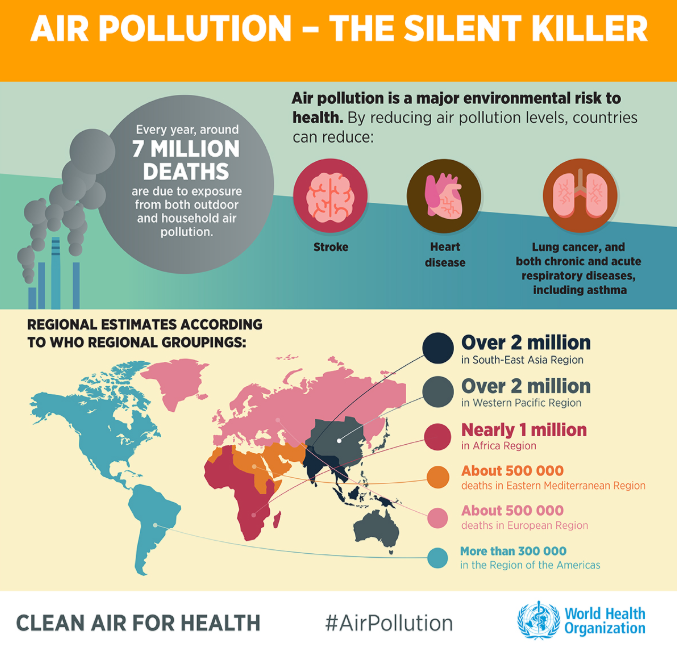
Darkened yellow skies have affected China this week including the capital Beijing. Particulate levels soared off the air quality index as thick dust and sand blew in. It hasn't been this bad in years.
Northern and western China into Mongolia is a vast arid region including the Gobi and Taklamakan deserts. Annually large amounts of dust and sand are picked up by the winds and thrown over more populated parts of China and then Korea. This week Beijing has seen its worst sandstorm for ten years with particulate matter levels soaring off the air quality scales. The skies darkened and turned yellow with very poor visibility as the sand blew in. People were wearing masks for a reason other than COVID but also with googles and hats to keep out the swirling dust.

This hazardous event was extreme and early but also appeared quickly, by Monday 15th March it was a widespread, severe sandstorm.
Heavy mining, overgrazing by cashmere livestock and the climate all add into the pot for a region prone to episodes of dust and sand pollution and the associated health impacts. There have been efforts to address deforestation and soil erosion as air pollution is such a grave issue around the world.

The CMA China’s Meteorological Administration warned mid-month of a gale and sandstorm with cold air to the NE of China and the dry dust-laden air rushing in from the west. The strength of the wind was dangerous with people being warned to avoid billboards and construction sites. This was a yellow Sandstorm warning, there is still amber and red as higher levels. They relate to visibility of 1000m, 500m and 50m. The warnings include:
“take anti-dust supplies to avoid injury of eyes and respiratory organs. Avoid outdoor activities if you are a patient with respiratory illness or sensitive to dust.”. The higher levels mention ‘Stop outdoor activities or dangerous operations, avoid riding bikes. Schools and kindergartens should adjust until the sandstorm is over. Suspend the movements of aircraft, trains and freeways’

The symbol of S with an arrow through it is used across the world to depict Sandstorm or blowing sand/dust.
Many flights were cancelled on Monday and schools closed. The worst has now passed for Beijing, but other areas of China are still under off the scale for levels of dust and sand particles.

The maximum levels on the Air Quality Index in China for larger particulates PM10 is 500 µg/m3. Levels reached over 2000 in places on Monday and are still close to that in northern China, such as Gansu on Tuesday. (PM – Particulate Matter)
UKGOV - Air Quality Standards Regulations 2010 require that concentrations of PM in the UK must not exceed: An annual average of 40 µg/m3 for PM10. A 24-hour average of 50 µg/m3 more than 35 times in a single year for PM10. An annual average of 25 µg/m3 for PM2.5.
WHO health recommendations call for countries to reduce their air pollution levels to annual mean values of 20 μg/m3 (for PM10) and 10 μg/m3 (for PM2.5).
Here in the UK, around half of UK concentrations of PM comes from anthropogenic sources in the UK, such as domestic wood-burning and tyre and brake wear from vehicles. Industry produces particulates but there are also natural sources like pollen, sea spray and desert dust coming up from the Sahara occasionally but wood-burning stoves in people’s house are becoming an issue and legislation has changed.
To give a comparison to the off-the-scale levels occurring in China this week, 2018 data for Port Talbot, Wales PM10 average levels in the region, stood at 27 µg/m3 and London 21 µg/m3 both over the WHO levels and were highlighted as a cause for concern. Numerous cities exceeded the harmful smaller particles PM2.5 annual levels.

This week, Bath in Somerset has implemented the UK’s first Clean Air Zone (CAZ). It’s aim; to reduce CO2 emissions and improve air quality. Bath’s zone is similar to London’s ULEZ. Zero emissions vehicles can travel within the zone free of charge, but polluting vehicles pay a fee. HGVs, coaches and buses face a high charge, some taxis, private hire vehicles, LGVs, minibuses, vans and pick-up trucks a lower charge. At the moment, regular passenger cars don’t pay. Birmingham, Oxford and Bristol will follow suit this year.
Top image NASA satellite image showing dust crossing China with Air-Quality reading from Gansu, central northern China.